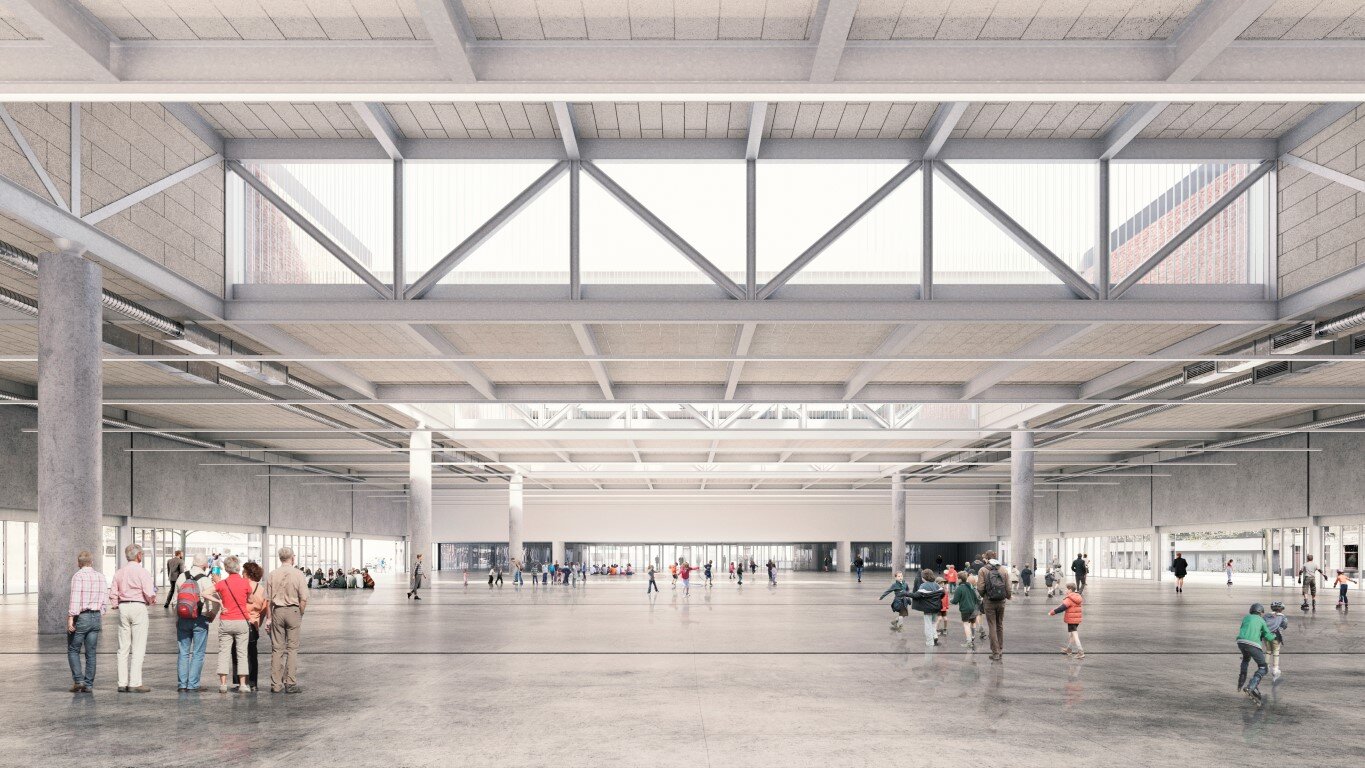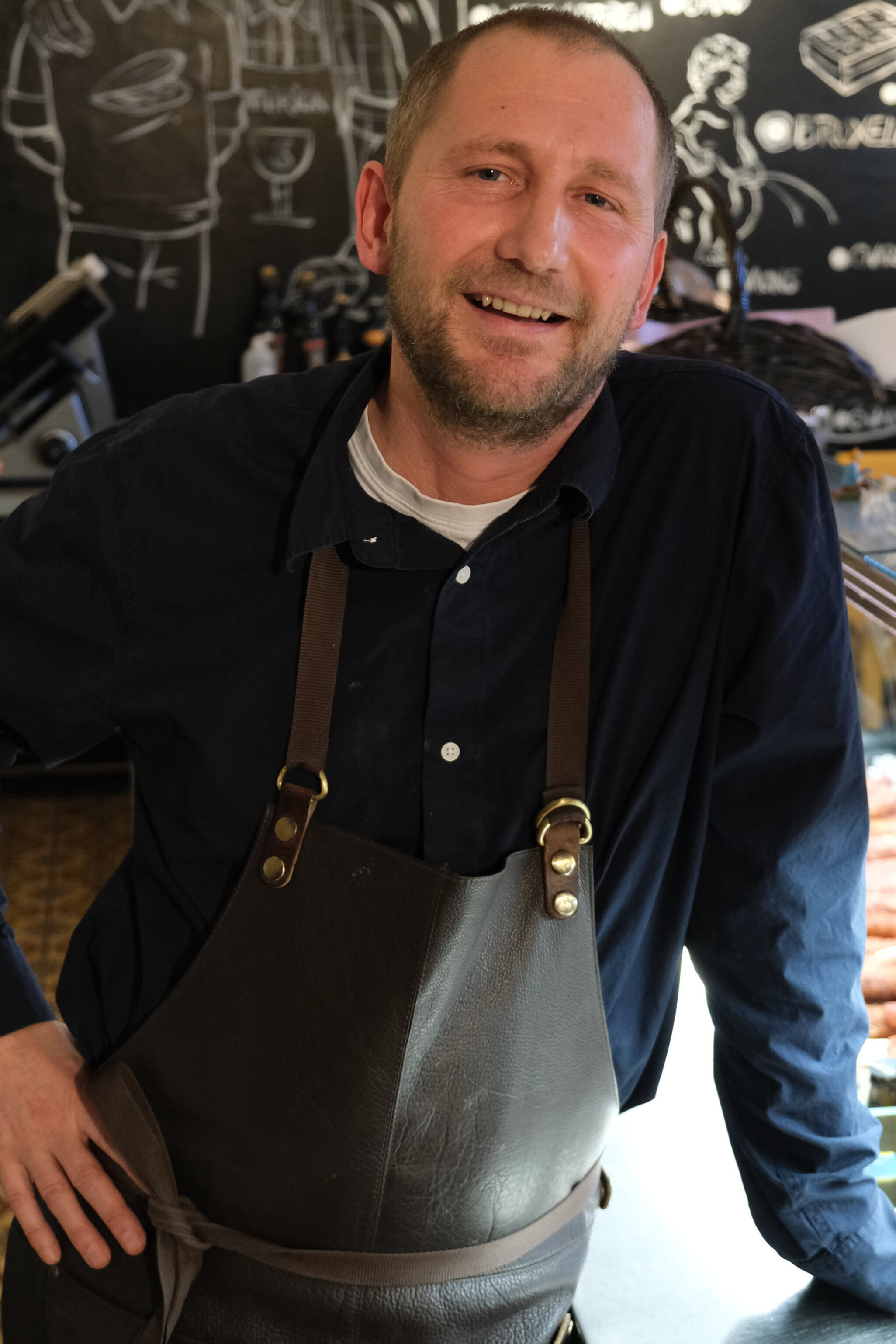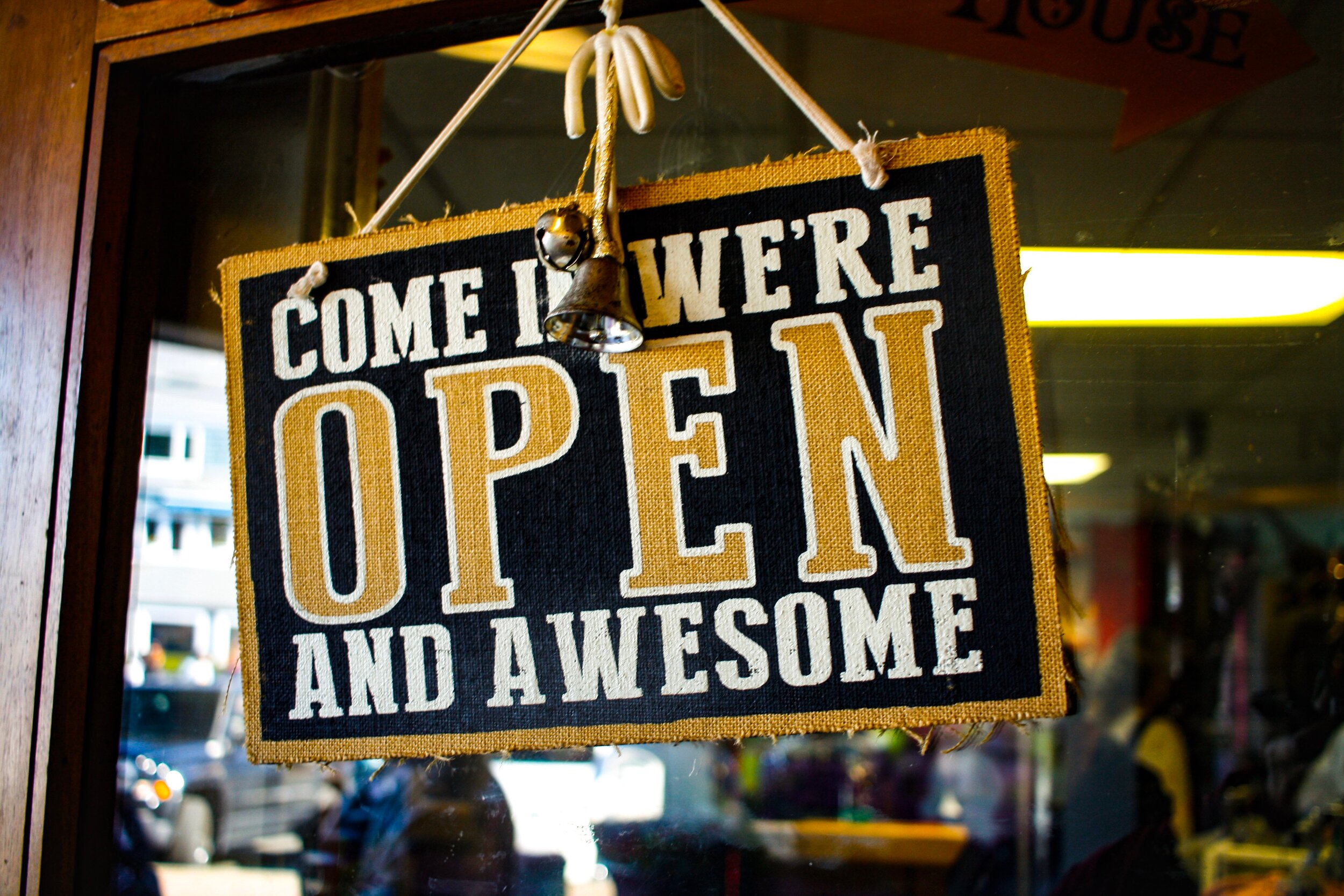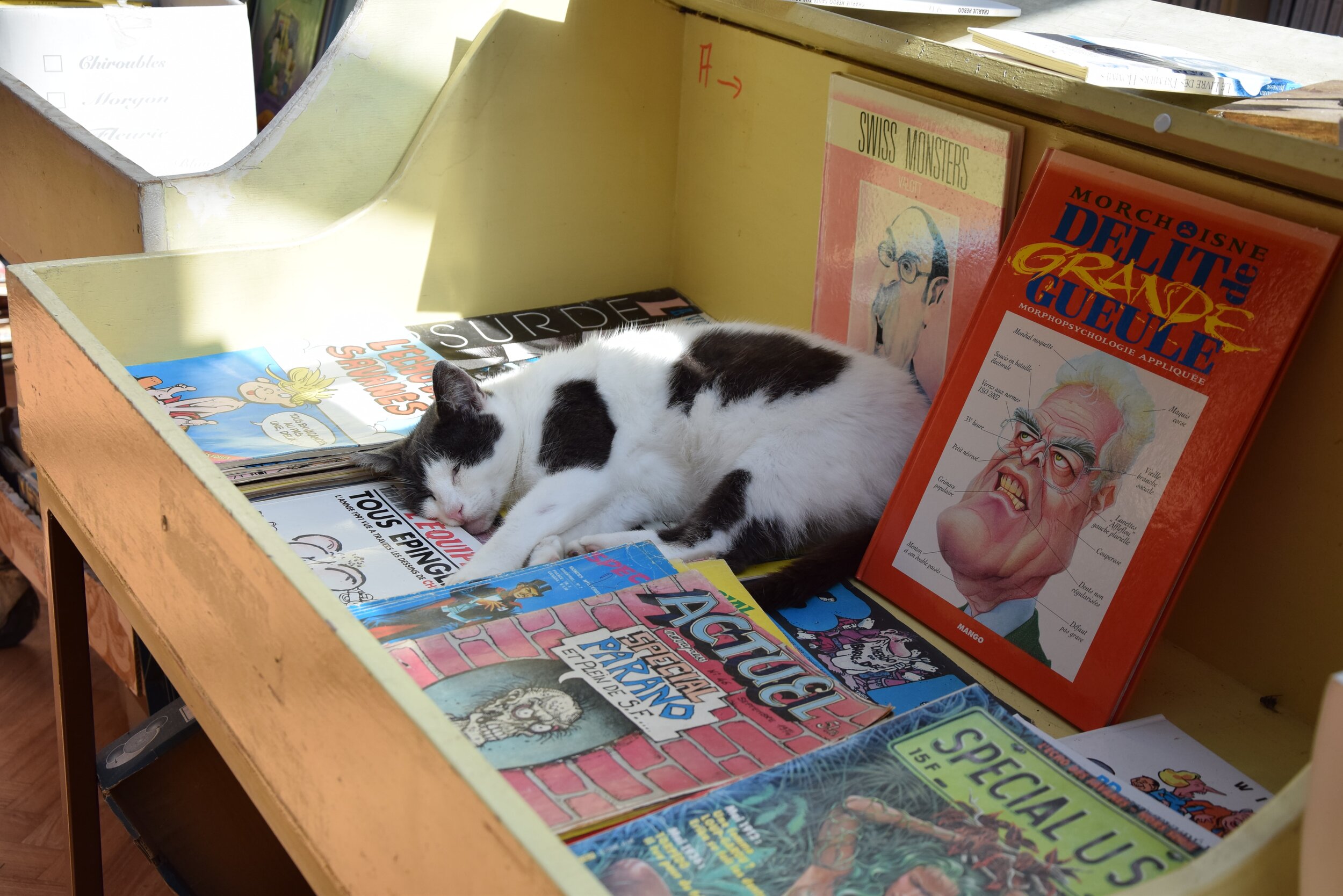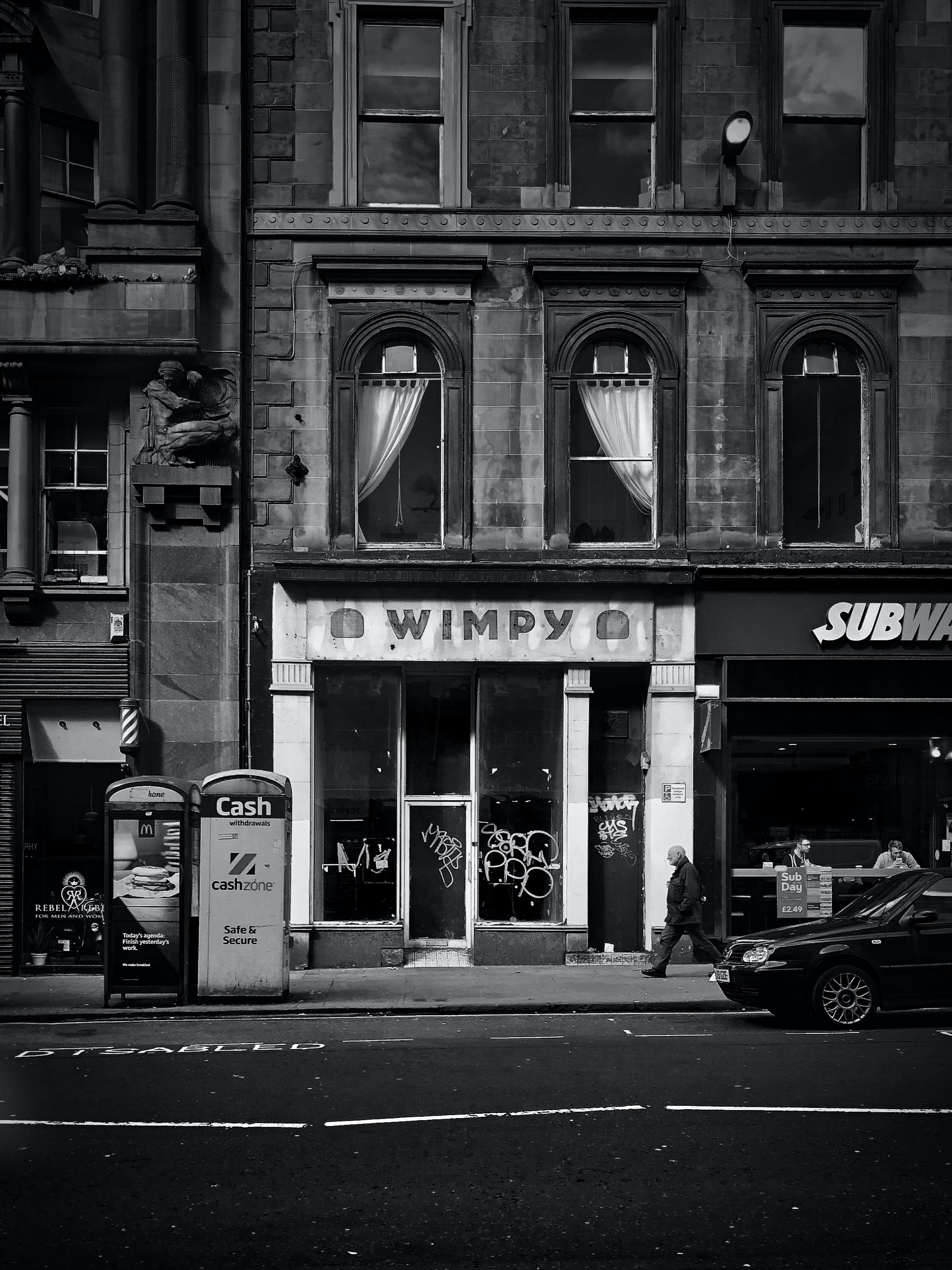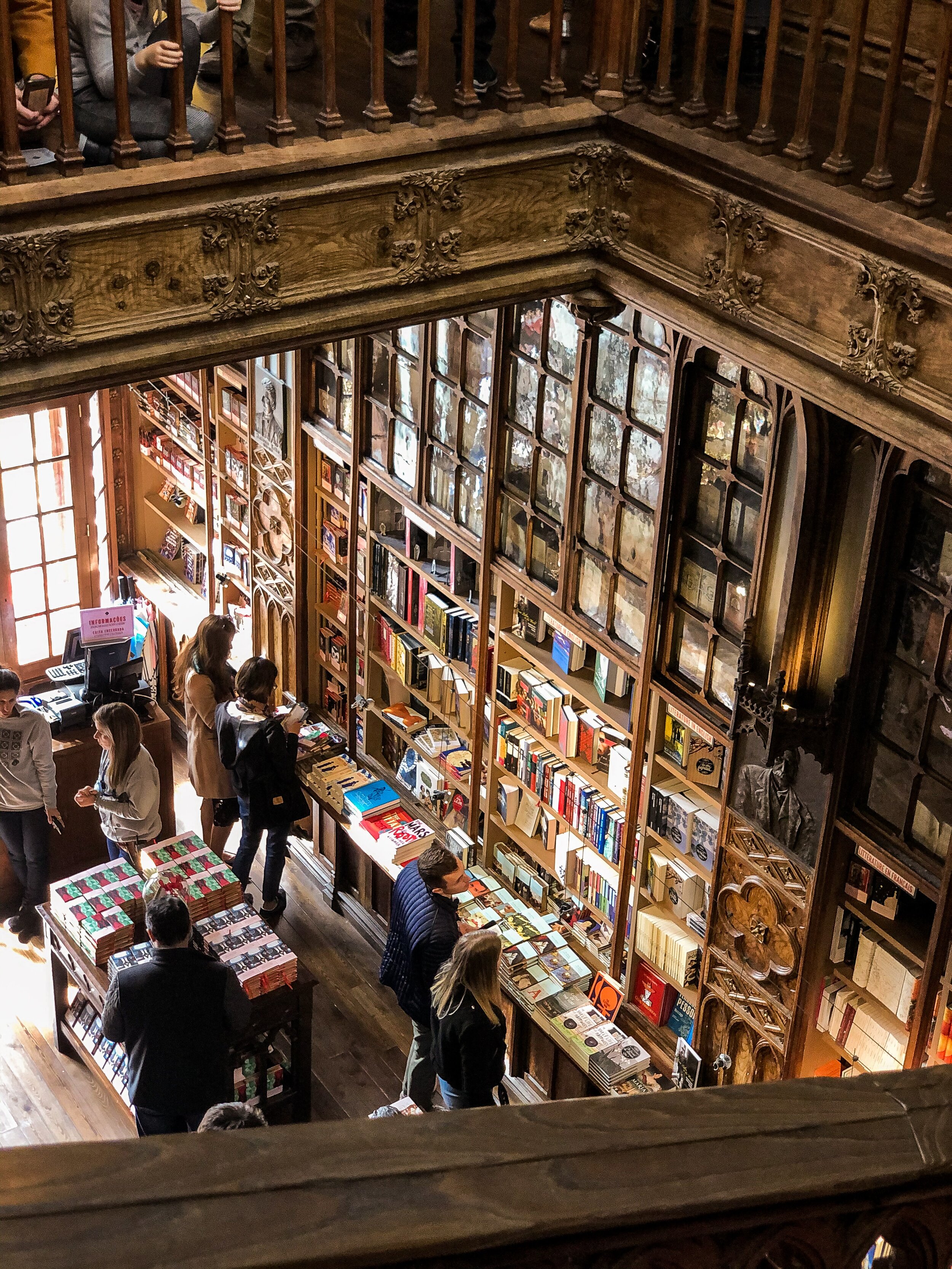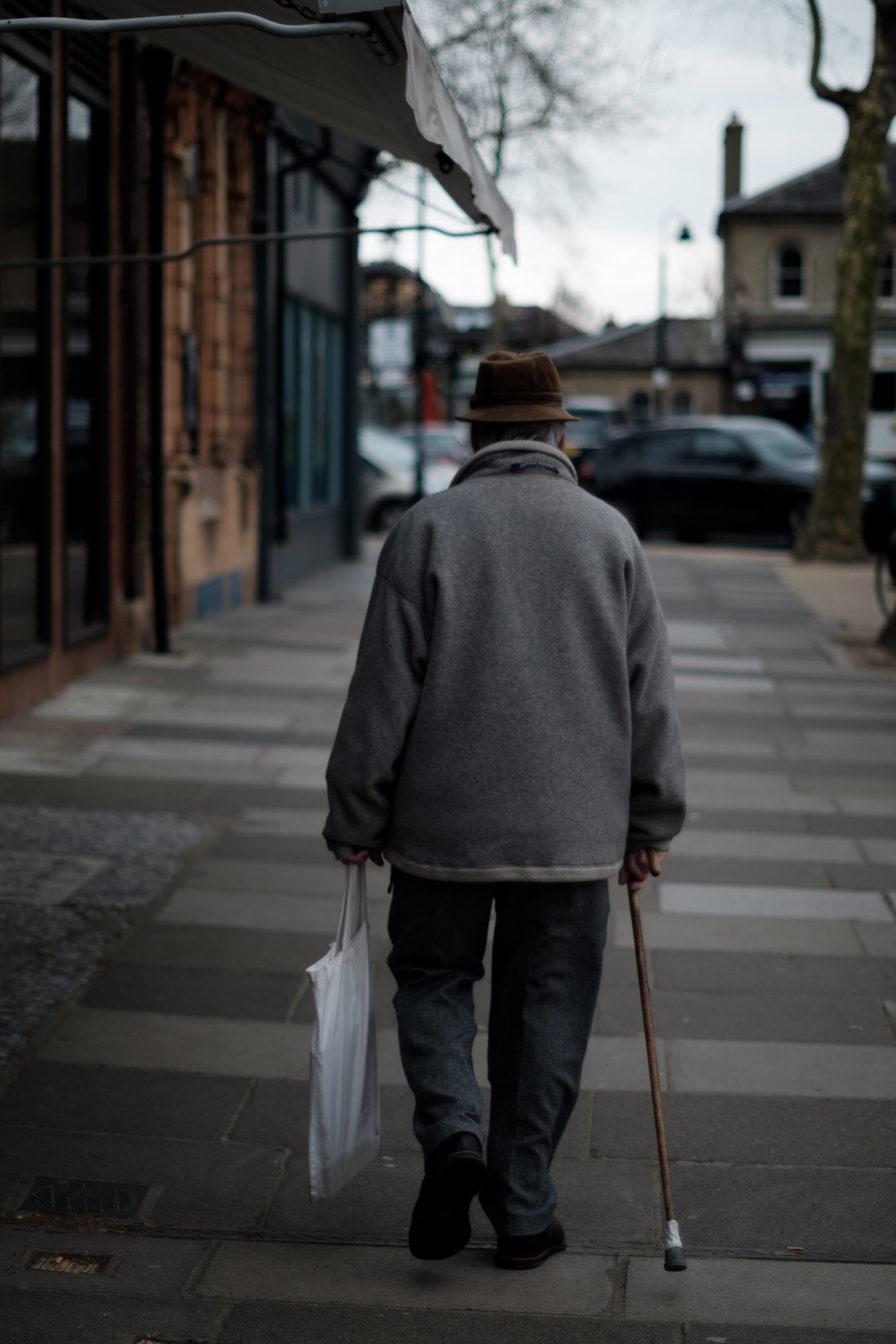Five Ways To Address Objections About Shopping Local
Deb Brown and SaveYour.Town highlight five opportunities for local residents and businesses to help create change and share a new mindset on how to think about community.
Deb Brown and SaveYour.Town highlight five opportunities for local residents and businesses to help create change and share a new mindset on how to think about community.
By Deb Brown and SaveYour.Town
Photo: Andrea De Santis/Unsplash
I’ve heard business owners say things like “in this economic climate, it’s hard to get new customers” and “no one has any money to spend, we can’t afford to use new ways to advertise”.
I’ve heard customers say “they never do anything different” and “why should I shop local? I can get a better deal at the big box store?”
These comments are opportunities for local residents and businesses to help create change and share a new mindset on how we think about our community.
Here’s 5 things to consider:
1. Stop saying “in this economic climate” – people are still shopping, traveling, and talking about businesses/places they visit. Start looking at what people want. Where we live, there are more day travelers coming from around the state. What can you provide for them?
2. Don’t spend other people’s money. In other words – don’t prejudge people. You really don’t know what their priorities are and how they want to spend their money. People do have money to spend.
3. New ways to advertise don’t always cost money. They do cost time. Facebook, twitter, LinkedIn, blogging can all be done for no cost or almost no cost. You do need to spend time on it to be effective. You wouldn’t just put up a billboard and expect people to flock to your store either. People need to see something 7 times before it sinks in!
4. If you’re not doing anything different, you’re become stale. Rearrange your store, change the windows, use new ads in the paper and on the radio – give people a reason to come visit you.
5. The big box store helps put small, local businesses out of business. Most of your dollars spent at big box stores don’t make their way back to your county/town. 57 cents out of every dollar leaves your community. 66 cents of every dollar spent in your local small businesses, stays local. Local businesses also know you, give much better customer service as a rule, hire people from your neighborhood, pay local taxes, and live where you live.
Photo: Markus Winkler/Unsplash
How Local Businesses Build Empathy, And What That Means For Rural Communities
“Our communities could use more empathy. Doing business with each other can help us build empathy.” Becky McCray and SaveYour.Town see potential in visiting the corner store.
“Our communities could use more empathy. Doing business with each other can help us build empathy.” Becky McCray and SaveYour.Town see potential in visiting the corner store.
By Becky McCray and SaveYour.Town
Photo: Brooke Cagle/Unsplash
I’ve been thinking lately how many large challenges we face as a society that come down to not thinking from other people’s perspectives.
Our communities could use more empathy. Doing business with each other can help us build empathy.
Selling something requires us to think about other people. We have to think about what other people will like, what they will buy. That is thinking from another person’s perspective.
In my years as retail store owner, I remember putting myself in my customers’ place, trying to understand what they might want to buy this week.
Buyers also can potentially improve their empathy when they realize that local sellers offer something that the buyers value enough to purchase. That’s even more important when the buyers and sellers come from different groups, like when a local farmer wanders through the Hispanic grocery and finds something new to try.
Businesses are essential third places where people can connect with each other. Your first place is your home, your second place is your work. Your third places are where you go to be with other people.
Retail businesses can be a third place, too. Ever go to the grocery store to buy 3 things but it took half an hour because you stopped to talk to people? Community happens when people talk to each other!
We’re rebuilding social capital while we’re chatting with friends or with a clerk over our purchase.
That doesn’t happen when people buy online. It has to be in person.
All good reasons why local commerce builds strong communities.
Photo: John Crozier/Unsplash
No Pulse Without Yours
You may never reflect on the question of why your city centre is important, but there is reason to think about it. You are involved in influencing which city centre you want in the future, through your choices. What is it worth to you – for business, for the environment, for social sustainability, for the visitor, for the investor, and the tax revenues? How is your city centre controlled? Who decides whether it should be nice or ugly and boring?
You may never reflect on the question of why your city centre is important, but there is reason to think about it. You are involved in influencing which city centre you want in the future, through your choices. What is it worth to you – for business, for the environment, for social sustainability, for the visitor, for the investor, and the tax revenues? How is your city centre controlled? Who decides whether it should be nice or ugly and boring?
By Björn Bergman, CEO Swedish Association of Towns and Cities & 43 City Partnership Organisations
Photo: Laura Fuhrman/Unsplash
43 Swedish cities' collaboration organizations have agreed in a necessary and important awareness campaign to point out the importance and value of our city centres. You may not always think about it, but the city centre is important and belongs to all of us, it becomes what we make it ourselves. It's our emotional attachment to the city and the window for the city's attractiveness. It creates belonging and togetherness. It attracts investment and talent, creates jobs, and lays the foundation for growth. Therefore, it also requires our attention, care, and our common focus.
No party alone can take responsibility for the attractiveness of the city centre as it is determined by diverse parts, such as commercial supply, environment, architecture, history, security, sanitation, accessibility, culture, entertainment, service, etc. We have a common interest in protecting the city centre because when it flourishes, it has many positive consequences that you don't always think about.
Sweden's city centres have a turnover of approximately SEK 220 billion, which means that consumption in the city centre contributes to more than SEK 30 billion in VAT revenue, which goes to health, education, and social care, among other things. Local jobs are created here, with an average of 12% of the employees in a municipality working in the city centre, which corresponds to around SEK 85 billion to the state and municipality in income taxes (source: WSP). Supporting your local business community thus contributes to growth, inspires entrepreneurship, and ultimately more tax money will be generated for welfare. Therefore, not only the business sector but also schools, health, social care, and infrastructure are benefited.
It is in the city centre that we find unique entrepreneurs, those who make their mark on the place and are an important contribution to the city's identity. Many shops, restaurants, and cafés are run by self-employed people who together contribute to the soul of the city through their special offerings. To consume locally is to act sustainably. When you buy locally produced goods, the overall transport decreases because the raw materials are nearby, or that you're already getting the right item in the right size and do not have to send returns.
The city centre is a result of all changes throughout history and will survive through adaptation. What it will look like and what function it will have in the future, we decide together by engaging in collaboration, harnessing our consumer power, and influencing politically. Your valuable city centre needs you – no pulse without yours!
Photo: Laura Fuhrman/Unsplash
Signed by the following organizations: Attraktiva Laholm, Attraktiva Oskarshamn, Bollnäs, Borås City, Cesam Örnsköldsvik, City Trollhättan, City Örebro, Destination Östersund, Engelholm, Eskilstuna city, Falköping Aktiv Handel, Företagarna i Piteå, Gävle Citysamverkan, Göteborg City Shopping, Handelsföreningen i Sölvesborg, Handelsplats Höganäs, Helsingborg city, HessleCity, Kalmar City Samverkan, Karlshamn Centrum, Karlskrona City, Kristianstad City, Kristinehamn, Linköping Citysamverkan, Lund City, Malmö Citysamverkan, Mölndals Innerstad, Nysam – Nyköping, Stadsliv Kiruna, Stadsutveckling i Sundsvall, Svensk Handel Luleå, Söderhamns Cityförening, Södertälje City, Tillsammans för Ronneby/Ronneby Handels- & Intresseförening, Tillväxt Motala, Unika Ludvika, Uppsala City, Visit Skellefteå, Visit Umeå, Vänneshandlarna, Västervik, Västerås Citysamverkan, Ystad i centrum, Åmål, Ängelholms Näringsliv.
Does The City Center Have A Future?
“The city center is in fact a result of all the changes throughout history and will survive through adaptation. We decide together what it will look like and what role it will play in the future, by engaging in collaboration, harnessing our consumer power, and influencing politically.” Björn Bergman, CEO at The Swedish Association of Towns and Cities, asks an essential question: What kind of city center - and future - do we want?
“The city center is in fact a result of all the changes throughout history and will survive through adaptation. We decide together what it will look like and what role it will play in the future, by engaging in collaboration, harnessing our consumer power, and influencing politically.” Björn Bergman, CEO at The Swedish Association of Towns and Cities, asks an essential question: What kind of city center - and future - do we want?
Photo: Victor Theo/Unsplash
The city center is in fact a result of all the changes throughout history and will survive through adaptation. We decide together what it will look like and what role it will play in the future, by engaging in collaboration, harnessing our consumer power, and influencing politically.
The city center is important to all of us. It is our emotional attachment to a city and how we show the attractiveness of the city. It creates belonging and togetherness. It attracts investment and talent, as well as laying the foundation for growth. Therefore, it also requires our attention, care, and our common focus. No party alone can take responsibility for the city center as it is determined by areas as diverse as commercial supply, environment, architecture, history, security, sanitation, accessibility, culture, entertainment, service, etc. The city center should be for everyone, always and in all parts.
Before the COVID-19 pandemic, a structural change of the city center had already begun. Large parts of the retail sector have been moved out to external shopping centers and trading venues for several decades. More recently digital commerce has also led to a decrease in sales of mainly infrequently purchased goods in city centers. Instead, restaurants, cafés and commercial services have replaced the stores, which has meant that the overall economic impact has continued to increase. The development of the city center from being the only trading venue to an important meeting place is clear, and it’s been accelerated by the increasing digitalization that has gained extra power through the restrictions of the pandemic. Trade will continue to be an important reason for visitors, along with many other activities. We will continue to find the local and completely unique entrepreneurs here, those who make their mark on the place and will be an important contribution to the city's identity.
The city center is undergoing a renaissance because it has the quality to meet the demands of the new era for sustainability and authenticity. It offers both commercial and non-commercial activities, but we must create new reasons to come to the center if trade no longer will fulfill the important social function. What attracts visitors to the city center and what should we fill the empty premises with in the future? Is it culture, entertainment, housing, offices, social care and service facilities, educational activities, or associations that will be our answer?
The city center will continue to be important to us and perhaps now is the right time, during the pandemic, to think about what type of city center we want to see? Time to formulate our common goals and visions, organize ourselves, draw up the plans for realization and gather resources to be able to carry out the actions! Collaboration between public and private actors will continue to be the only possible way to create attractive city centers.
Is there a Role For Face-To-Face Post-Covid?
“The most common reply was that people intended to dine out in the city, the second was to meet with friends/family, and the third was to have a drink with friends, while the fourth most common reply was to shop for clothes/accessories. While these uses of the city are not unprecedented what they showed was the increasing association of the city centre with socialising and meeting. The thing that most people missed when in lockdown was human interaction.” Richard Guiney, CEO of DublinTown, reflects on the importance of trust and meetings in community building post-Covid.
“The most common reply was that people intended to dine out in the city, the second was to meet with friends/family, and the third was to have a drink with friends, while the fourth most common reply was to shop for clothes/accessories. While these uses of the city are not unprecedented what they showed was the increasing association of the city centre with socialising and meeting. The thing that most people missed when in lockdown was human interaction.” Richard Guiney, CEO of Dublintown BID, reflects on the importance of trust and meetings in community building post-Covid.
Photo: Dominik Lalic/Unsplash
The world has changed, or so we are told. The narrative is that in the Post-Covid-19 world the ‘new normal’ will replace much of what went before.
How true this is and what it means for our work and social interaction remains to be seen.
Personally, I don’t see humanity fundamentally changing. We have experienced the impacts of a dangerous, transmissible and disruptive virus. However, the virus has not managed to change our DNA. We are all still human and we will continue to act and behave according to our nature.
It is fundamental to our humanity that we use our thought process and communication to protect ourselves from harm and to exploit opportunities that present themselves to us. We form teams to get things done, we pool our talents and allocate responsibilities based on skillsets. Within the workplace and wider society we co-ordinate and join the output of various groups through dialogue and create synergies between various groups. This is the essence of human nature. Our ability to combine our efforts to greatest effect has been central to our domination of the planet over a very short time. In the history of the world the 60,000 years since humans first left Africa is not even the shortest of heartbeats.
Humans will continue to meet and collaborate, it’s what we do.
However, the nature and form of this communication may change. This is not so much a product of the Covid Crisis but rather the technological revolution that we are living through. Covid has served as a catalyst event which has accelerated change rather than creating new trajectories. Change that would have happened over 10 years, happened in 10 months.
The easy ability to transfer to Work From Home, and the dramatic increase in on-line shopping simply would not have been possible if technology had not already created those opportunities. The question then arises, what comes next for the meeting place.
In line with the hybrid balance between work from home and return to the office, I envisage that meetings will also take on a hybrid model. The building of trust is an essential element of team building and in deciding who we will or will not do business with. Ascertaining whether or not we will trust another, is rooted in our animal instinct, speaking to someone observing their body language, listening to their tone of voice, seeing if they look you in the eye when they speak. We can have all the technology in the world and all the technology that is to come but it will never result in our losing what makes us human nor the animal instincts that allowed our ancestors to prosper and have their DNA handed down to us.
On the other hand I see routine and transactional engagement continuing in the virtual space. Frankly this is convenient and efficient. While most people will see virtual as second best, it suffices for the routine. We have a precedent here. The telephone allows us to communicate but it was never going to prevent us meeting in person.
Photo: Henry Be/Unsplash
I envisage change deriving from two main sources in the 21st century, the technology revolution and responses to climate change. The former will facilitate change required by the latter and I believe that all aspects of our lives will be impacted, from where we live to how we live, to how we earn our living to how we spend our time and money. There is a longer conversation as to the total impacts that these changes will bring to our towns and cities but suffice to say that we can expect less space devoted to retail and more to entertainment, leisure and opportunities to meet, together with residential uses.
As human beings the most basic of animal behaviour is still evident in the building of trust and creation of business and social partnerships. We share a meal before we sign the deal. It may be a social event but the sharing of a meal is often the precursor to bringing a business or social relationship to the next level or the consolidation of friendship. Can anyone realistically see this changing?
And so to the social aspect of meeting. As we exited lockdown in Dublin, we researched whether or not people intended returning to the city and where they indicated the intention to return what they intended to do here. The most common reply was that people intended to dine out in the city, the second was to meet with friends/family, and the third was to have a drink with friends, while the fourth most common reply was to shop for clothes/accessories. While these uses of the city are not unprecedented what they showed was the increasing association of the city centre with socialising and meeting. The thing that most people missed when in lockdown was human interaction. The thing they most want to do when freed from confinement was to resume human engagement.
Statistics clearly demonstrate the toll the pandemic has had on physical health. What will become clearer as the months progress is the toll on mental health, the impacts on our overall wellbeing when we put our humanity on hold. While many will maintain an element of remote working, most have expressed the desire to the return to the office, at least on a hybrid basis, something that it is commonly accepted is essential for the training and development of younger and newer staff.
As vaccines curtail the most harmful effects of the pandemic and we feel safe to venture back into the real world, I believe that our humanity will again prevail. It may be the case that we will actively shun the lives that we led during the pandemic. Let’s be frank, how many people will look back on 2020 and 2021 as the best time in their lives? Perhaps we will be only too happy to leave the laptop meeting to one side and get out and meet real people face to face. Perhaps we will return to the store to purchase, time will tell. However, it is unlikely that we will cease to learn from each other or cease seeking out new and interesting people to meet. We will not quell our curiosity and desire to find new experiences.
We can increasingly substitute face to face engagement with on-line formats but as human beings surely we will ultimately find this the second best option. Perhaps it’s a product of my age, but I cannot see us confining face to face contact to the box labelled things we used to do.
Photo: Fabrízio Severo/Unsplash
From XS to XXL: Nice To Meet You Again In Bruges
In Bruges, Belgium, investments in the physical development of the city are followed by investments in social infrastructure and new partnerships. Ilse Snick tells the story as it happens.
In Bruges, Belgium, investments in the physical development of the city are followed by investments in social infrastructure and new partnerships. Ilse Snick tells the story as it happens.
Bruges. Photo: Olivier Depaep/Unsplash
Every year many thousands of people find their way to Bruges, the historic city in Belgium known for its beautiful buildings, culture, gastronomy and the swans in the Lake of Love. In 2019, the UNESCO world heritage city welcomed almost 8 million visitors, every visitor bringing a unique encounter with this very special city. Unfortunately COVID 19 put an abrupt end to this. But today Bruges is more than ever ready to meet (you) again!
Bruges is praised as one of the most beautiful tourist destinations in Europe and even in the world. The city is a unique mixture of everything a visitor is looking for: every building in the old town is instagrammable, there is unique art, famous museums, … Bruges breathes culture and the gastronomy is top notch! A meeting in Bruges is always unforgettable.
In 2022, the city will take the concept of meeting to a higher level. In addition to the tourist visits, Bruges is also boasting a new state of the art meeting and convention centre.
BMCC. Copyright: Meta Architectuurbureau
The Bruges Meeting & Convention Centre (BMCC) opens in January 2022. It will be the ideal venue for events, conferences and trade fairs. Its outstanding location, a stone’s throw from Concertgebouw Brugge (another great meeting venue) within walking distance of hotels and attractions, meets all the needs of a modern event and conference location. The ground floor(4,500m²) is the ideal space for trade fairs. The upper floors are designed for meetings and conferences. The building provides all that is needed to meet: a plenary room, a foyer, poster areas, 12 breakout rooms and a catering area with a view of Bruges city centre.
Meeting in the heart of historic Bruges is a unique experience. When you step outside the BMCC you can immediately discover what this beautiful UNESCO World Heritage City has to offer.
A board meeting with 10 colleagues, a conference with 500 participants or an event for 2,500 visitors… everything is possible in this new landmark in Bruges.
BMCC. Copyright: Meta Achitectuurbureau
This new venue will certainly create new opportunities and bring an extra dimension to meeting in Bruges. The project also offers new opportunities for trade and catering in the city. That is why, linked to the BMCC, Bruges city centre management is also launching a microproject in order to enhance the return of this new venue. To prepare the entrepreneurs and to offer them every opportunity that comes with the opening of the BMCC, there is Smedenstraat 37: a meeting place for traders with the city services and citycentre management.
Smedenstraat, Bruges.
The citycentre manager, her marketing team and the business & hospitality coach of the city will have their offices in the shopping street at the foot of the BMCC for the next two years. Small shopkeepers and entrepreneurs can pop in with all their questions and problems. The Smedenstraat 37 project is barrier-reducing and unique in all respects. It brings the city to the entrepreneurs and bets on the future. Small shopkeepers are being prepared for the dynamics that the new Bruges Meeting & Convention Center will bring. They can participate in an intensive coaching program to reorient their business. We want to put this neighbourhood in the spotlight with marketing and social media campaigns. Our shop window can be used by retailers or artists to showcase their products. But above all, it is a project where we want to facilitate meetings: between the city and the entrepreneurs, between the entrepreneurs themselves and between entrepreneurs and visitors. Because meeting is life, and life is meeting!
Going Local: An Interview With Eric Thirion
Meet Eric Thirion who runs a Belgian delicatessen in Copenhagen. Like so many local shops all over the world, it fills out an essential role as a community anchor.
Meet Eric Thirion who runs a Belgian delicatessen in Copenhagen. Like so many local shops all over the world, it fills out an essential role as a community anchor.
By The Empty Square
Eric Thirion. Photo: The Empty Square
Enjoy your visit at Thirion’s and remember to go local wherever you are. Supporting places like this, especially in times of crisis and pandemics, is critical. They play a key role in creating lively, vibrant, coherent cities.
Mr. Jaffe, We Miss You
Does your city encourage independent retailers and shop owners with a community spirit?
Does your city encourage independent retailers and shop owners with a community spirit?
By The Empty Square
Photo: Vania Rivalta/Unsplash
Does your city encourage independent retailers and shop owners with a community spirit?
Ever heard of Mr. Jaffe? Apart from selling snacks, drinks, and newspapers, this is what Mr. Jaffe, who used to be a kiosk owner in Greenwich, NYC, typically did on a Monday morning:
”[he]… supervised the small children crossing at the corner (…); lent an umbrella to one customer and a dollar to another; took custody of two keys; took in some packages for people in the next building who were away; lectured two youngsters who asked for cigarettes; gave street directions; took custody of a watch to give the repairman across the street when he opened later; gave out information in the range of rents in the neighbourhood to an apartment seeker; listened to a tale of domestic difficulty and offered reassurance; told some rowdies they could not come in unless they behaved and then defined (and got) good behaviour; provided an incidental forum for half a dozen conversations among customers who dropped in for oddments; set aside certain newly arrived papers and magazines for regular customers who would depend on getting them; advised a mother who came for a birthday present not to get the ship-model kit because another child going to the same birthday party was giving that…”.*
“[He]provided an incidental forum for half a dozen conversations among customers who dropped in for oddments ...”
Photo: Jason Leung/Unsplash
Mr. Jaffe, who lives on in Jane Jacobs’ book, The Death and Life of Great American Cities, constitutes a person and a function that can hardly be overvalued when it comes to community creation.
If you have a Mr. or a Mrs. Jaffe in your neighbourhood, consider yourself lucky. Remember to pay him or her a visit – soon!
Where we live, they are a dying breed.
*Read – or read it again: Jane Jacobs’ classic The Death and Life of Great American Cities (Penguin Books, 1961)
Empty Shops Are Windows Of Opportunity
Empty shops are usually bad news. But in Norway a research project shows that new potential is waiting to be unfolded for those who dare to do something else than just put up a “For Rent”-sign.
Empty shops are usually bad news. But in Norway a research project shows that new potential is waiting to be unfolded for those who dare to do something else than just put up a “For Rent”-sign.
By The Empty Square
Photo: Sven Brandsma/Unsplash
Empty shops are usually bad news. But in Norway, a research project shows that new potential is waiting to be unfolded for those who dare to do something else than just put up a “For Rent”-sign.
In three Norwegian towns/cities: Tromsø (pop. 77.000), Arendal (pop. 43.000), and Lærdal (pop. 2.200), public, private and civic stakeholders succeeded in turning dead spaces into living spaces filled with new functions, activities, meeting places, studios, and facilities.
Not only did they create life, job opportunities, and new relations together. They also ignited a new conversation spanning politics, administration, civic matters, and businesses. The core questions were: What kind of place do we want to create here? And how?
The involved municipalities report that the methods are essential: The cross-disciplinary approach, the belief in participation and co-ownership, the will to experiment and test out new things, the social focus, and the openness that lays in giving space to people that otherwise would not be there. “That’s what we’re carrying with us,” they conclude.
The positive results and statements from all participants appear truly encouraging when it comes to solving a problem that so many towns and cities are facing.
See the report written (in Norwegian only) by senior researcher Guri Mette Vestby from the Norwegian Institute for Urban and Regional Research (NIBR; 2018): Fra sentrumsdød til sentrumsglød – følgeforskning af pilotprojektet ”Levende lokaler”. The report can be downloaded here. Our translation.
Shops, Digitization, And Human Warmth
Digitization has long been a buzz word for retailers. According to Doug Stephens, one of the world’s foremost retail futurists, many owners of (physical) shops seem to believe that digitization is what will save them in the future and they see (almost any kind of) digital development as a ‘strategic investment’. But the fact is, says Stephens, “that no one needs a digital experience at all”.
Digitization has long been a buzz word for retailers. According to Doug Stephens, one of the world’s foremost retail futurists, many owners of (physical) shops seem to believe that digitization is what will save them in the future and they see (almost any kind of) digital development as a ‘strategic investment’. But the fact is, says Stephens, “that no one needs a digital experience at all”.
By The Empty Square
Photo: Square Lab/Unsplash
Digitization has long been a buzz word for retailers. According to Doug Stephens, one of the world’s foremost retail futurists, many owners of (physical) shops seem to believe that digitization is what will save them in the future, and they see (almost any kind of) digital development as a ‘strategic investment’. But the fact is, says Stephens, “that no one needs a digital experience at all.*
What people seek are memorable, meaningful experiences. Inspiring surroundings and conversations. Super competent guidance, knowledgeable staff and human contact. Planning for unique experiences, not digitization, is what retailers should be setting out to do, according to Stephens.
Likewise, it won’t be what you sell but how you sell it that’ll make the difference. We can order any product in the world, but we can’t order the smile, the greetings, the dialogue, the surprise around the corner, the smells, the inspiration that come along with a real life experience.
If retailers succeed in responding to the social and sensuous needs, shoppers can be looking forward to an era where physical shops will again be magic places providing great everyday experiences and meaningful relations.
It’ll also mean that retail workers in the future will need special professional, creative, and social qualifications that will heighten their position, status, and wages. Working in the retail industry will again be a profession that you can be proud of – not ‘just a job’.
See Doug Stephens: Reengineering Retail – the Future of Selling in a Post-Digital World (Figure 1 Publishing Inc., 2017), p.239.
What Kind Of Future Do You Hold In Your Shopping Bag Today?
We used to think that shopping was an individual affair. What I buy concerns me and nobody else.
We used to think that shopping was an individual affair. What I buy, concerns me and nobody else.
By The Empty Square
Photo: bantersnaps/Unsplash
We used to think that shopping was an individual affair. What I buy concerns me and nobody else. But in our shopping bags lie not only our goods but also an invisible plan for the future: our health, our culture, our cities, Planet Earth.
As consumers we are powerful investors, planners, and voters. You probably heard that before. But it’s somehow easy or comfortable to forget.
Just for today, let’s remember our power and invest wisely in everything we buy. If you succeed, be proud. Try again tomorrow.
Books, Love, Life: An Interview With Michael Bjørn Nellemann
Why are some shops and streets more alive than others? Can a book shop be about love and community? What role can a school play in a shopping street? How can imagination play a bigger role?
Why are some shops and streets more alive than others? Can a book shop be about love and community? What role can a school play in a shopping street? How can imagination play a bigger role?
By The Empty Square
Michael Bjørn Nellemann. Photo: The Empty Square
Why are some shops and streets more alive than others?
Can a book shop be about love and community? What role can a school play in a shopping street?
How can imagination play a bigger role in the development of towns and cities?
According to Michael Bjørn Nellemann, the owner of Thiemers Magasin, a small bookstore in Copenhagen, a key to living places is letting them grow organically and in a human scale.
Everyday Beauty: An Interview With Katherine Ines
If we were aware of the true cost, value, and (possible) beauty of the stuff we buy, would our towns, cities, and world look any different?
If we were aware of the true cost, value, and (possible) beauty of the stuff we buy, would our towns, cities, and world look any different?
By The Empty Square
Katherine Ines. Photo: The Empty Square
If we were aware of the true cost, value, and (possible) beauty of the stuff we buy, would our towns, cities, and world look any different?
Meet one of the few remaining tailors in Copenhagen, Katherine Ines. She examines the potential in relearning what things are really worth.
Essential questions pop up: Does beauty hold a place in our everyday life? Why is it important to have workshops in our cities? What happens when the production of things disappears from street level?


















